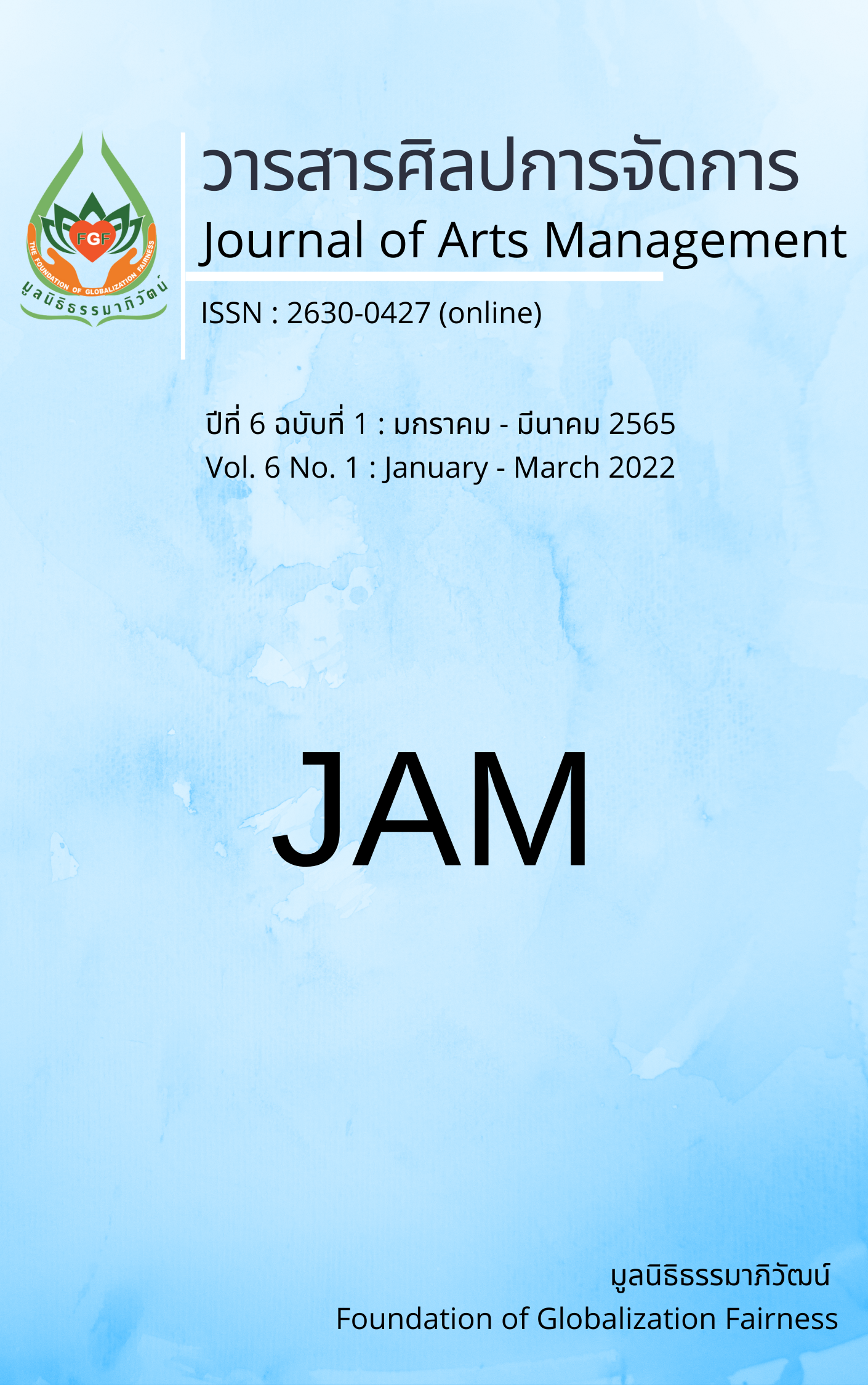Discourses to Promote Awareness for Thai People
Main Article Content
Abstract
This article aimed to (1) study the knowledge of Thailand in eight dimensions; (2) study the discourse that communicates to create Thai consciousness; and 3) present rhetorical arts to create a sense of Thai people. This study was qualitative research, collecting information from documents and key informants. The research tools were the content summary form and the interview form, data analysis, synthesis, and group discussion. A descriptive summary of the research results. Offer a qualified person to certify that the research results were found as follows:
1) Knowledge about the Thai nation There were eight dimensions of creative craftsmanship, including the human science dimension. Thai people have the habit of dreaming. and high imagination social science dimension, considerate, honor, and respect seniors’ jurisprudence They adapt every rule to their own context. In terms of geographical dimensions, a blender is the center of many races. Education dimension, memorizing mechanic, education system, teaching to memorize and follow cultural dimensions, imitators, adaptations, adaptations from other cultures Political science, patriotic, from cultivating nationalism and economic dimensions, dependent on economic monopoly and dependent on wealth.
2) The discourse in the Thai national anthem is to create love, consisting of love on fertile land, love oneness, love independence even has to sacrifice something, and love peace not oppressive, aiming to coordinate benefits adopt a good model.
3) Rhetoric to create a sense of the nation, which is to glorify the institution consisting of Thailand as a single kingdom. There is a distinctive feature. integrated application maintaining a nation through the presence of institutions and good governance is a management approach that is suitable for Thai society.
The new body of knowledge is that Thailand can remain a nation until today. because there is love in the institution.
Article Details

This work is licensed under a Creative Commons Attribution-NonCommercial-NoDerivatives 4.0 International License.
Views and opinions appearing in articles in the Journal of Arts of Management It is the responsibility of the author of the article. and does not constitute the view and responsibility of the editorial team I agree that the article is copyright of the Arts and Management Journal.
References
Charoensuk, S. (1999). National anthem. Ruean Kaew Printing.
Kamutphisamai, A. (1982). The nationalist ideology of Thai leaders. Thammasat University.
King Prajadhipok's Institute. (2012). Citizenship and the future of Thai democracy (citizenship and the future of Thai democracy) (13th ed.). King Prajadhipok's Institute.
Ministry of Education. (2008). Basic education core curriculum 2008. Agricultural Cooperative Association of Thailand Printing House.
Office of the Education Council Secretariat. (2013.) Development of Thai basic education curriculum. Office of the Education Council Secretariat Ministry of Education.
Office of the Non-Formal and Informal Education. (2018). Thai national history. Ministry of Education.
Phuaksom. P, C. (2003). Politics in the history of the Thai flag. Matichon.
Si Mahayana, E. (2012). Standard master, history, grade 1. Aksorn Charoenthat.
Singsuwan, A. (2014). Social changes and origin on “Localism Consciousness” of Isan people between 1932 and 1957. Praewa Kalasin Academic Journal Kalasin Rajabhat University, 1(1), 9-30.
Suwan, S. (2011). State and the concept and theory of development. Kasetsart University.
Wongthet, S. (2016). Suchit Wongthet: Creative literature based on legend siam column. Thailand Matichon Daily newspaper published.
Worakitkasemsakul, S. (2011). Research methods in behavioral sciences and social sciences. Udon Thani Word Art Printing.


